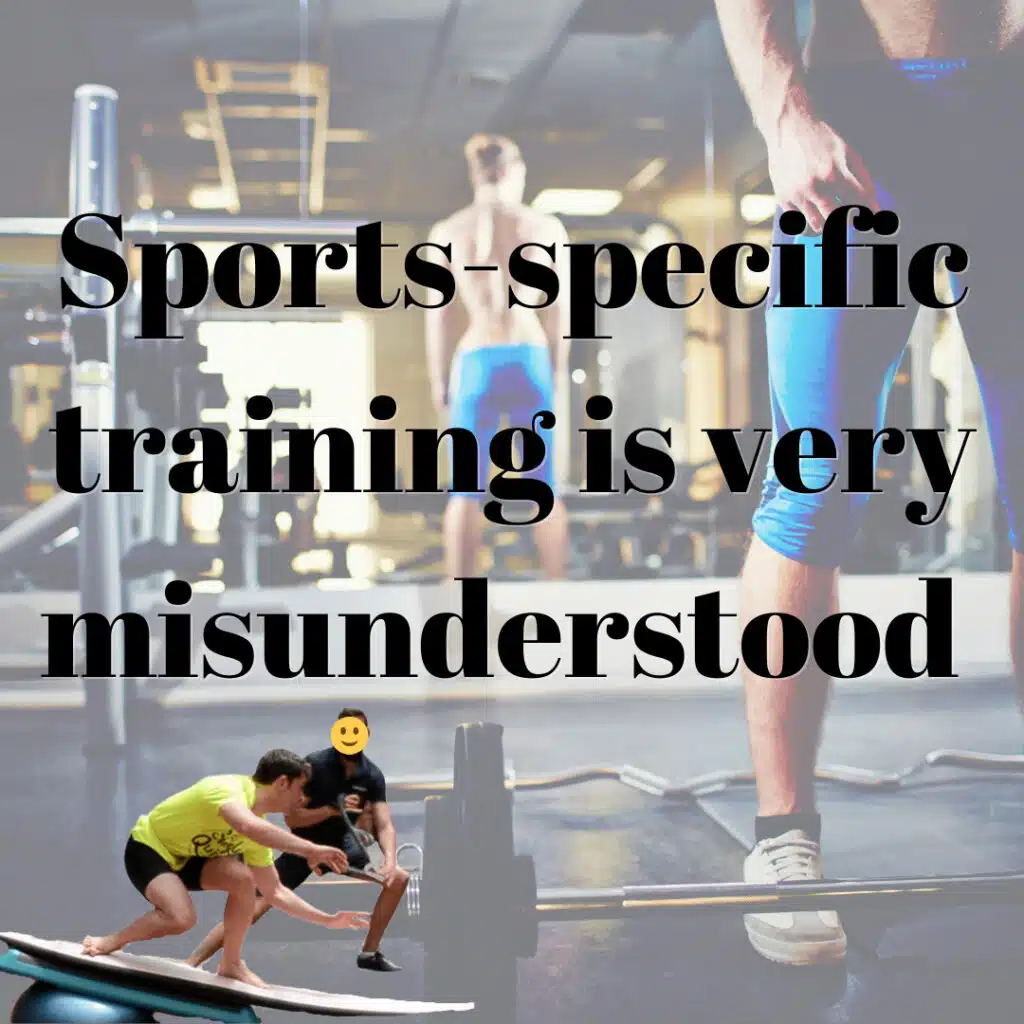
Sports-specific exercises, aka sports specificity have become increasingly made up to mimic sports movement patterns and have become the ‘norm’ for some fringe sports. The principle of specificity states that sports training should be relevant and appropriate to the sport for which the individual is training in order to produce the desired effect. Ok, this makes sense and a lot of training styles, methods etc. are based upon this for athlete development. Better, faster, stronger, more resilient etc. etc.
What is lacking partially here for the uneducated/inexperienced is understanding what general sports training principles are: overload, reversibility, progression, individualization, periodization, and specificity. If the trainer has no idea on any of these principles, then they really should not be training athletes! While specificity does have a place and time, it really can be an inefficient use of time and inefficient means of performance enhancement if there is a minimal time frame and the execution is gone too far down the highly unusual/lets mimic everything we can that resembles the sport and call it “training” track. The gains from this naïve approach are minimal at best yet seem to be seen more and more within fringe sports training!
The goal of training should be to work on technical limitations, build upon weaknesses, mechanical issues and appropriately build strength in order to make them resilient to injuries and perform better. That is strength and conditioning 1 0 1! Simple. It’s to complement the sport and athletes’ performance.
While high repetition work performed from the sport does develop sufficient strength / endurance and neuromuscular control / skill acquisition to successful complete technical manoeuvres, it also develops imbalances, bad habits and overuse issues that lead to injury! Therefore, spending time building on technical limitations such as strength/endurance/power/rotations/range of movement, mobility etc. through progressive resistance training will allow for greater developments when time is spent doing the sport and can fast track skill acquisition too from the neurological developments made from training.
Sports training is basically a continuous cycle – get stronger, more powerful & move better in the weight room…practice your sport, hone in on skills… repeat. There is no trying to load fine movement patterns of the sport in the weight room, as these so called “functional” exercises cannot be sufficiently loaded to maximise strength and power…it’s only emphasising the current available strength of the individual! Read that again … it’s only emphasising the current strength. The sooner we understand this, the better and sooner we can get away from these bizarre, extremely specific skills/tricks/specific functional exercises/drills the better in terms of athletic performance.
The most effective activities athletes can partake in involves progressively loading basic human movement patterns. This will increase strength and power, decrease the risk of injury, and allow one to produce more force on the field, where it matters most! If there is a tiny training window to work in before the next comp, then the training should be to maximise essential human fundamentals, not honing in on very specific fine skills/performance changes when there are other key, prime movers that should be focused on coming into a competition. It’s too late! That work should have been done prior to the comp stage… and it sure as hell is not logical to spent countless hours recovering from recovery! Why we insist on switching off the body before battle baffles me.
The essence of sports-specific training is simply doing the sport or something very similar that crosses over … I.e skateboarding for board sports, throwing at a target etc. That’s basic skill acquisition, neurological adaptations and at its core, sport-specific training.

